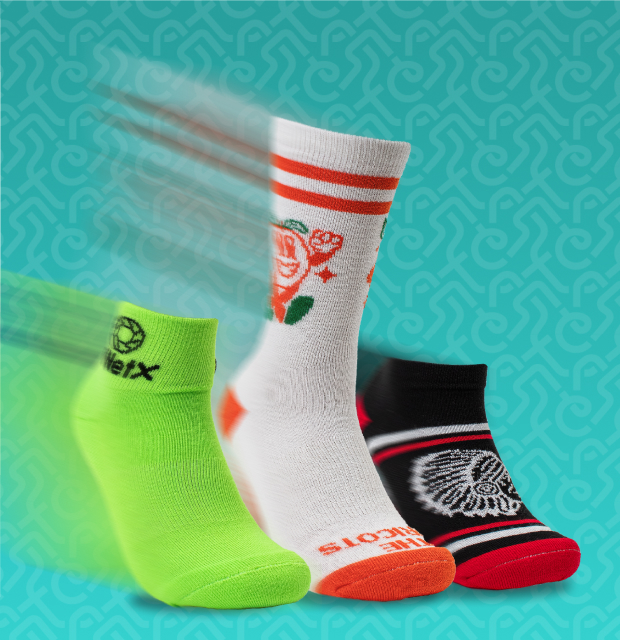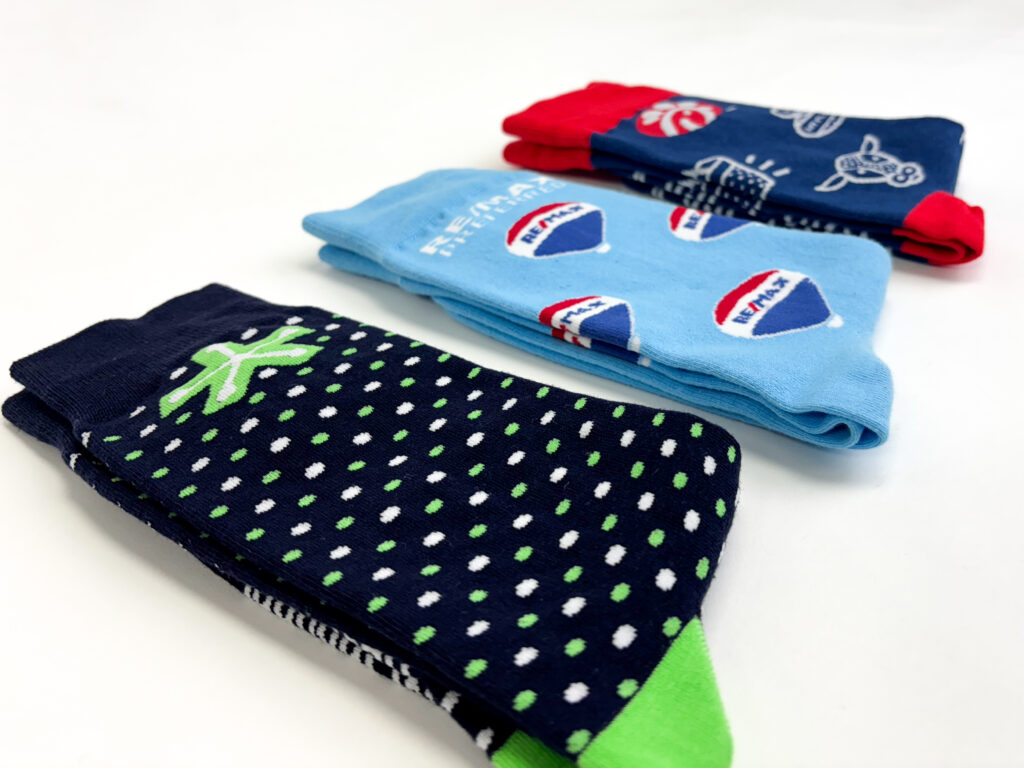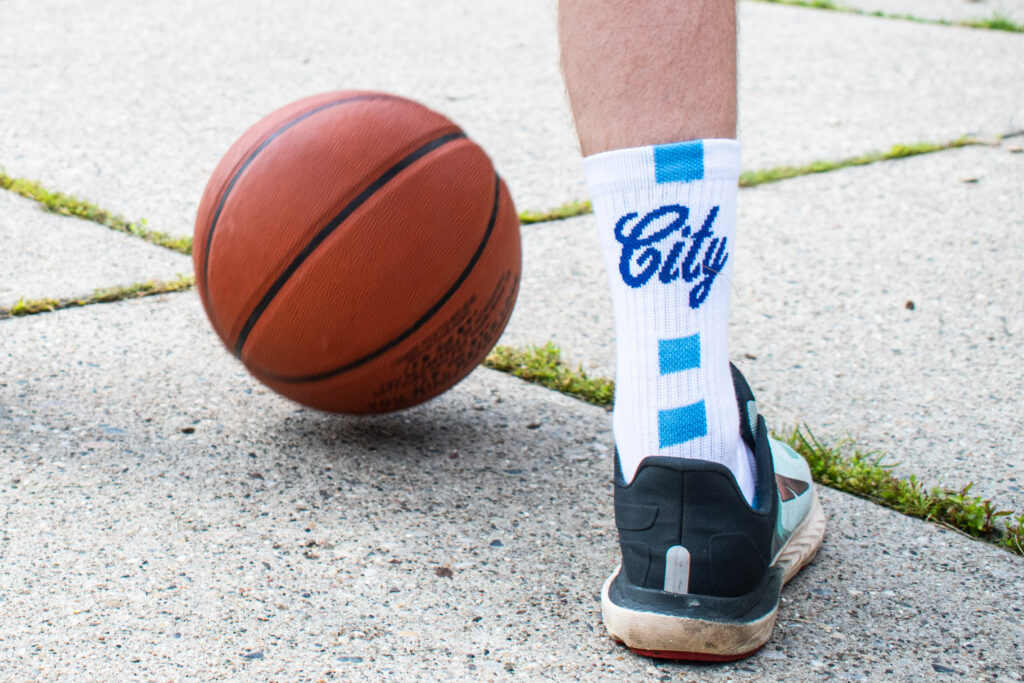Because Socks Deserve More Credit in the Game
Basketball has come a long way since Dr. James Naismith first threw a ball into a peach basket in 1891. Over time, the game has evolved—faster pace, higher jumps, flashier plays—but one unsung hero of basketball history? The socks.
Yes, socks.
From knee-high wool monsters to no-shows that barely exist, basketball socks have gone through just as many transformations as the sport itself. And today? They’re an essential part of performance, style, and team branding.
Let’s take a trip down memory lane and see how basketball socks have gone from basic foot covers to custom statement pieces.
1891 – 1920: The High Sock Era (Because What Even Was Sportswear?)
In the early days of basketball, players weren’t exactly rocking Nike compression gear.
Their “uniforms” consisted of:
✔ Wool shirts (because nothing says fast breaks like itchy, sweat-absorbing fabric).
✔ Baggy pants or long knickers (because, sure, why not).
✔ Knee-high socks—stretching well above the knee, possibly to compensate for the fact that basketball shoes hadn’t been invented yet.
The 1895 Wichita YMCA Basketball Team was one of the first to be photographed in uniform, and yep—those socks were doing a lot of work.
1920 – 1940: The First Real Basketball Uniforms (And the Converse Era Begins)
As basketball became an organized sport, the uniforms evolved. The first true basketball jerseys appeared—fastening like leotards (to prevent untucked shirts), and knee pads became common.
Then, in 1917, Converse released the iconic Chuck Taylor All-Stars.
And with high-top sneakers came… shorter socks.
✔ Players ditched the full-knee sock look in favor of calf-length socks that barely peeked over their Converse.
✔ The shift wasn’t just about style—it was about mobility.
The era of super high socks was fading, but the best was yet to come.
1940 – 1960: The Baggy Sock Trend (A Confusing Yet Important Era)
By the 1940s and ‘50s, basketball uniforms started looking more modern.
✔ The shorts got shorter (think uncomfortably short by today’s standards).
✔ The jerseys became more fitted.
✔ And the socks? They got… baggy.
For whatever reason, the baggy sock trend took over. Players were seen sporting loose-fitting socks that slouched above their sneakers.
It wasn’t exactly functional, but hey—style is style.
1960 – 1990: The Tube Sock Takeover
If you were alive in the ‘60s, ‘70s, or ‘80s, you probably owned at least one pair of tube socks with colorful stripes at the top.
✔ Knee-high socks made a comeback, but this time, they were bold, striped, and all about team spirit.
✔ By the ‘70s, NBA players fully embraced the trend, rocking long socks with short shorts and high-top sneakers.
✔ The socks weren’t just for looks—they provided extra padding in a time when basketball shoes still lacked high-tech cushioning.
Magic Johnson, Larry Bird, and the entire ‘80s NBA era gave us some of the most iconic tube sock moments in history.
1990 – 2000: The No-Show Revolution (Thanks, MJ)
Then came Michael Jordan.
MJ changed more than just the game of basketball—he changed its entire look.
✔ He pioneered longer, baggier shorts, completely shifting uniform style.
✔ Knee-high socks were out—no-show socks were in.
For most of the ‘90s and early 2000s, basketball players ditched visible socks entirely. If you saw socks, they were barely peeking out of the top of the shoe.
It was a massive shift from the bold, look-at-me socks of the ‘70s and ‘80s.
2010 – Present: Performance Socks & Custom Branding Take Over
Today, basketball socks aren’t just about fashion—they’re part of the game.
✔ Most players wear calf-high crew socks for support, cushioning, and performance benefits.
✔ Compression technology, moisture-wicking fabrics, and extra arch support have made socks an essential part of player performance.
✔ Custom team socks are now a huge part of basketball culture, from high school teams to the pros.
In fact, custom socks have become an extension of team branding—logos, mascots, and team colors aren’t just on jerseys anymore; they’re on socks too.
The result? Socks have come full circle.
They’ve gone from just another part of the uniform to a powerful statement—on and off the court.
FAQs
1. Why Did Basketball Players Switch from High Socks to No-Show Socks?
Blame the ‘90s fashion shift—baggy shorts took over, and knee-high socks just didn’t fit the look anymore. Plus, as basketball shoes evolved, players no longer needed socks for extra protection and padding.
2. How Have Advances in Fabric Technology Changed Basketball Socks?
Modern socks are nothing like their wool and cotton ancestors. Now, they’re made with:
✔ Moisture-wicking fabric to keep feet dry
✔ Compression support to help with circulation and performance
✔ Cushioning to reduce impact on the court
They’re smarter, stronger, and designed for serious athletes.
3. Why Do Teams Wear Custom Socks Now?
Custom basketball socks have become a key part of team branding. They:
✔ Unify a team’s look beyond just jerseys.
✔ Promote team identity (and look great in photos).
✔ Boost fan engagement—because let’s be honest, fans will buy anything with their team’s logo on it.
Final Thoughts: Basketball Socks Are More Than Just an Accessory
From wool knee-highs to high-performance custom socks, basketball footwear has evolved as much as the sport itself.
Today’s players aren’t just wearing socks for comfort—they’re wearing them to play better, look better, and represent their teams with style.
And if you’re serious about the game? You better have the right socks.






